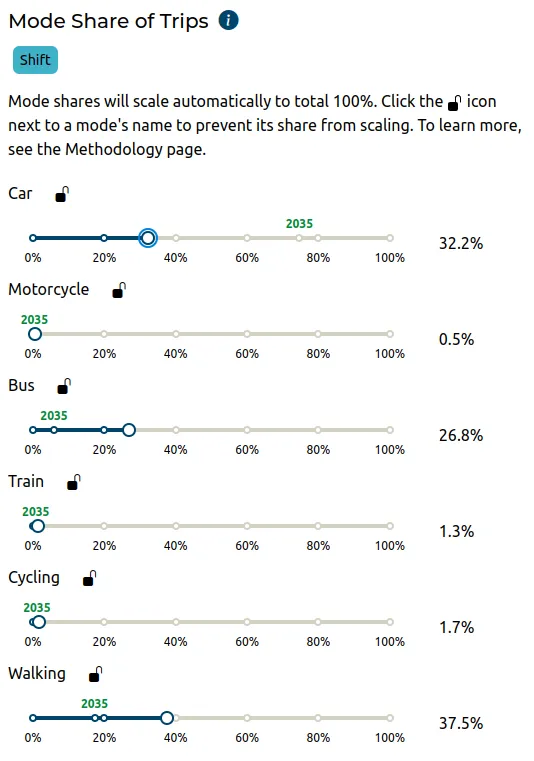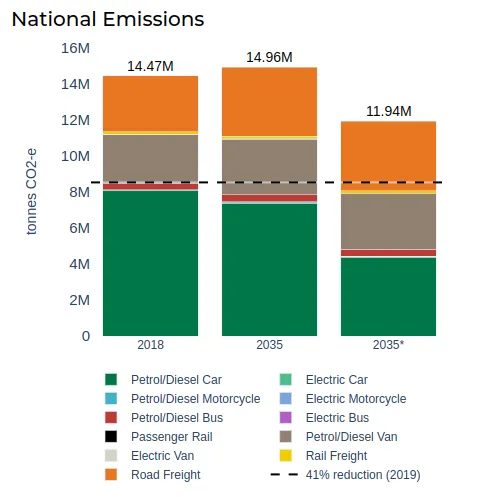Transport 2035
Admiring our land transport emissions work for various district and regional councils, Waka Kotahi commissioned us to build a national online emissions calculator for public use. Thus was born Transport 2035.
Transport 2035 incorporates nationally consistent public data about existing and projected land transport patterns. Using it, you can estimate CO2-e emissions from land transport and explore different scenarios for reducing them by year 2035 by changing key variables, such as population, mode share, fleet composition, and average trip length.
For instance, you can drastically reduce the travel mode share of cars in Auckland, Wellinton, and Christchurch, New Zealand's three most populated regions, to see if that meets the national targets of the Transport Emission Reduction Plan. (Does the stacked emissions bar in your 2035* scenario fall below the dashed line?)


Regional councillors, Transport 2035's target audience, have found the app particularly useful. Here is a testimonial from a principal strategy advisor at a regional council in New Zealand.
We had a complete gap in information between the land transport GHG emissions information from Stats NZ and the activities being developed by authorised organisations. We knew the general direction and alignment, such as active transport. But the size and scale of change was not known.
Since the release of Transport 2035, I used it to identify what the scale and pace of change might look like. I use it to outline what we are trying to figure out, the scale and pace of change, and why it is so important to understand the social and economic impacts from the scale of the shift. I refer to it as the ‘go to’ tool for the sector as we are all working together on ‘one network’.
I have used in on screen in meetings with staff at Health NZ, National Air Quality Working Group Transport Emissions subgroup and other council staff. It has informed our next steps in transport planning to focus on rideshare/carshare to increase vehicle occupancy, and to review Travel Demand Management solutions to support a reduction in weekly trips taken. This tool resulted in approving a target of 41% reduction in GHG emissions, and a wider set of policies that supported ‘avoid, shift, improve’ rather than the 2021 plan which focussed on mode shift only.
Since using it I have seen an increase in the recognition of the size of the shift we are facing in transport, including by people outside of transport. It has opened conversations about different ways of doing things, but also provides hope as we actually do have plans already in place with some of these targets. What the tool says may be big, but it is not impossible.
 MRCagney Works
MRCagney Works